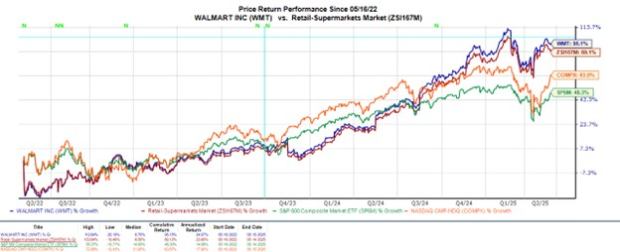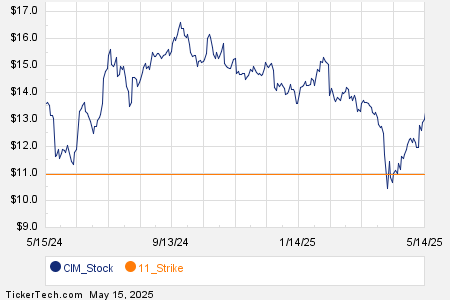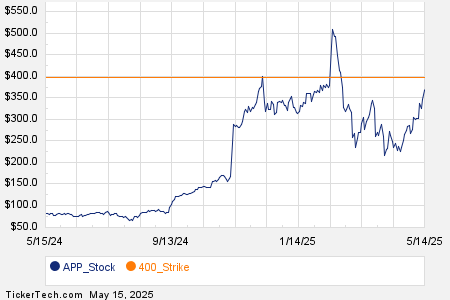Dollar Index Declines Amid Mixed Economic Signals
The dollar index (DXY00) is down 0.25% today. Weak US producer prices for April contributed to this decline, pushing Treasury note yields lower and increasing speculation that the Federal Reserve may cut interest rates. Mixed U.S. economic reports add to the complexity of the dollar’s position.
U.S. Economic Reports Reflect Uncertainty
Initial unemployment claims in the U.S. remained steady at 229,000, closely aligning with expectations of 228,000.
The April final-demand Producer Price Index (PPI) reported a decrease of 0.5% month-over-month and 2.4% year-over-year, falling short of expectations that called for a 0.2% increase month-over-month and 2.5% year-over-year.
Retail sales in April increased by 0.1% month-over-month, surpassing expectations of no change; however, retail sales excluding automobiles also rose by 0.1%, which was below the anticipated 0.3% increase.
In other reports, the May Empire manufacturing survey showed an unexpected drop of 1.1 points to -9.2, against expectations for a slight improvement to -8.0. In contrast, the May Philadelphia Fed business outlook survey indicated a stronger-than-expected increase of 22.4 points to -4.0, outperforming the forecast of -11.0.
Manufacturing production in April fell by 0.4% month-over-month, which is worse than the anticipated decline of 0.3% and represents the most significant drop in six months.
Additionally, the May NAHB housing market index declined by 6 points to a 1.5-year low of 34, contrary to expectations for no change at 40.
Federal Reserve’s Path Forward
Fed Chair Jerome Powell mentioned that policymakers are reviewing their monetary policy framework. This includes considering shortfalls in U.S. employment and approaches to achieving their inflation target. He emphasized that “anchored inflation expectations are critical to everything we do” and reiterated their commitment to a 2% target.
Currently, markets are pricing in an 8% chance of a 25 basis point rate cut following the June 17-18 Federal Open Market Committee (FOMC) meeting.
Euro and Yen React to Dollar Weakness
The EUR/USD (^EURUSD) increased by 0.13% today, with gains attributed to dollar weakness. Positive economic news indicating that Eurozone March industrial production rose more than anticipated by the most significant margin in over four years supported the euro.
However, these gains were tempered as Eurozone Q1 GDP was revised down to 0.3% quarter-over-quarter from a previously reported 0.4%. Comments from ECB Vice President Luis de Guindos suggested potential challenges for Eurozone companies and households, citing trade tensions, high funding costs, and low economic growth. He also mentioned that increased defense spending could exert pressure on public finances.
In the Eurozone, March industrial production reported an increase of 2.6% month-over-month, exceeding expectations of 2.0%. Swaps indicate an 86% probability of a 25 basis point rate cut by the European Central Bank (ECB) during its policy meeting on June 5.
The USD/JPY (^USDJPY) dipped 0.60% as the yen strengthened against the dollar. This movement followed a softer-than-expected April PPI report, which bolstered expectations for Fed rate cuts. Additionally, Japan’s April machine tool orders rose for the seventh consecutive month, and higher Japanese government bond yields were supportive for the yen, with the 10-year JGB bond yields climbing to a six-week high of 1.491%. Lower Treasury note yields further aided the yen’s strength.
Precious Metals Market Dynamics
In commodity markets, June gold (GCM25) rose by $17.30 (+0.54%), while July silver (SIN25) fell by $0.059 (-0.18%). Mixed trends in precious metals were observed, with silver reaching a one-month low. Gold prices rebounded from a five-week low due to dollar weakness following the poorly received April PPI report. Lower Treasury note yields also supported gold prices.
Geopolitical tensions in the Middle East, including ongoing conflicts, have sustained safe-haven demand for precious metals. Nevertheless, fund liquidation in long gold positions has exerted downward pressure on prices, particularly after the U.S. and China agreed to reduce tariffs over the weekend. Silver prices faced pressure as industrial demand concerns intensified after a reported decline in U.S. manufacturing production and a downward revision in Eurozone Q1 GDP.
On the date of publication, Rich Asplund did not have (either directly or indirectly) positions in any of the securities mentioned in this article. All information and data in this article are solely for informational purposes. For more information, please view the Barchart Disclosure Policy here.
More news from Barchart
The views and opinions expressed herein are the views and opinions of the author and do not necessarily reflect those of Nasdaq, Inc.




